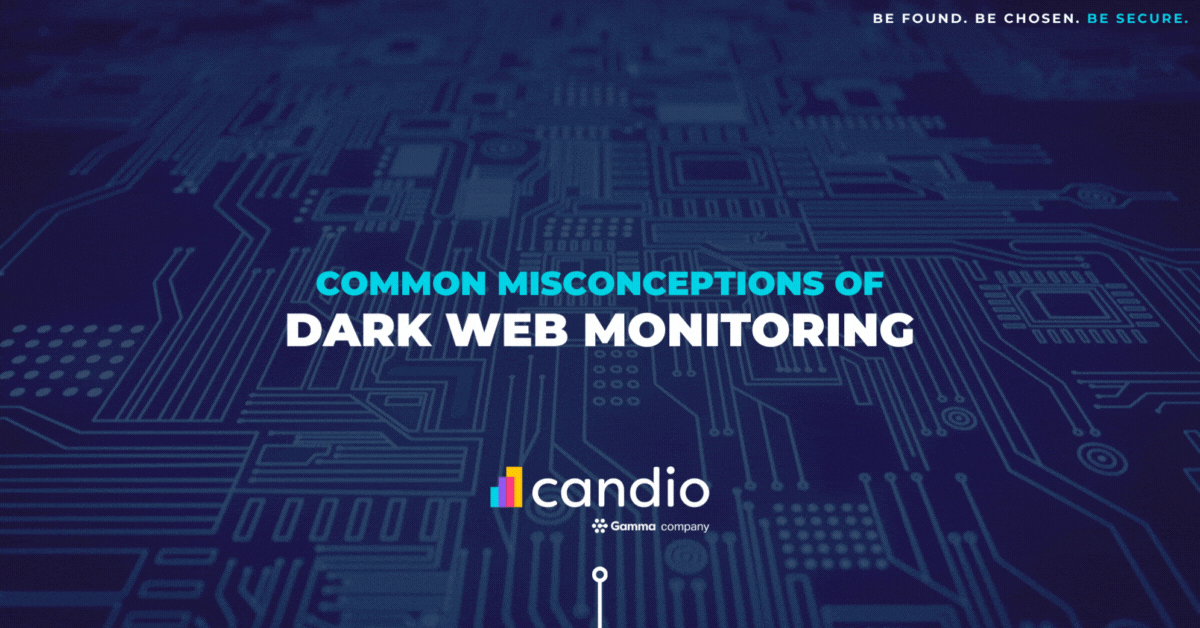written by Tom Chedham
In the age of digital connectivity, the term “Dark Web” often invokes a sense of mystery and fear. Dark Web monitoring has emerged as a crucial cybersecurity practice, but unfortunately, it is surrounded by numerous misconceptions.
In this blog, we aim to debunk some common myths surrounding dark web monitoring, shedding light on its purpose, limitations, and the importance of understanding this aspect of cybersecurity.
Misconception 1: Dark Web Monitoring is Only for Illegal Activities
One of the most prevalent misconceptions about dark web monitoring is the belief that it primarily deals with illegal activities. While it’s true that the dark web is often associated with illicit trade and criminal behavior, monitoring the dark web goes beyond policing illegal transactions.
Businesses and individuals alike can benefit from tracking mentions of their sensitive information to prevent data breaches, monitor brand reputation, and stay ahead of potential cyber threats.
Misconception 2: Dark Web Monitoring Guarantees 100% Security
Dark web monitoring is an essential tool in a cybersecurity strategy, but it does not provide foolproof security. It helps identify potential risks and vulnerabilities, but it should be complemented with other security measures such as regular software updates, strong authentication practices, and employee training.
Relying solely on dark web monitoring could create a false sense of security, leaving businesses vulnerable to other forms of cyber threats.
Misconception 3: Dark Web Monitoring is Only for Large Enterprises
Another common misconception is that dark web monitoring is a concern only for large enterprises with significant online presence and valuable data. In reality, businesses of all sizes can be targets for cybercriminals. Small and medium-sized enterprises (SMEs) often have fewer resources dedicated to cybersecurity, making them attractive targets.
Dark web monitoring can be tailored to the specific needs and scale of any organisation, helping them proactively identify and mitigate potential risks.
Misconception 4: Dark Web Monitoring is Invasive and Violates Privacy
Concerns about privacy are valid, but dark web monitoring is not about invading personal privacy. It focuses on monitoring publicly available information on the dark web, such as forums and marketplaces where cybercriminals often trade stolen data.
Organisations utilizing dark web monitoring tools prioritise protecting their own and their clients’ sensitive information without infringing on individual privacy rights.
Misconception 5: Dark Web Monitoring is an IT Department’s Sole Responsibility
While the IT department plays a crucial role in implementing and managing dark web monitoring tools, cybersecurity is a shared responsibility across an organization. Employees should be educated on cybersecurity best practices to prevent unintentional data leaks and phishing attacks.
Creating a culture of awareness and responsibility is essential for the success of any dark web monitoring strategy.
Conclusion
Dark web monitoring is a valuable component of a comprehensive cybersecurity strategy, but it’s essential to dispel the myths surrounding its purpose and limitations.
By understanding the realities of dark web monitoring, businesses and individuals can make informed decisions to safeguard their sensitive information, protect their brand reputation, and stay one step ahead of cyber threats. Embracing a holistic approach to cybersecurity is key in the ever-evolving digital landscape.
